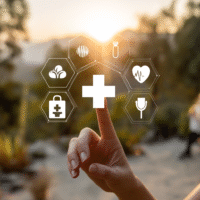Understanding the Trial Results
In a recent study, researchers looked at how training caregivers helped them take care of children with severe acute malnutrition (SAM) at home. SAM is a serious condition where children do not get enough nutrients, but this study showed that caregivers can learn to manage it better with some training.
What Worked?
- Caregiver training increased knowledge and confidence in checking their children’s health.
- Caregivers could accurately measure a child’s arm size (a way to check for malnutrition) and classify it correctly, matching the study staff’s results more than 92% of the time.
- Caregivers felt more confident managing their child’s health at home, even three months after the training.
What Didn’t Work?
- The study did not specifically measure how much this affected the children’s recovery time or overall health outcomes.
Benefits for Patients and Clinics
This study shows that with proper training, caregivers can effectively manage their children’s health at home. This can help reduce the burden on healthcare facilities and provide better access to treatment for children with SAM in low-resource settings.
Real-World Opportunities
- Hospitals can implement training programs for caregivers to empower them in managing SAM.
- Clinics can create resources and tools to support caregivers in monitoring their child’s health.
Measurable Outcomes
- Track caregiver confidence and knowledge before and after training.
- Monitor the accuracy of caregivers’ measurements of arm circumference over time.
- Assess the number of children showing improvement in their nutritional status.
AI Tools to Consider
- AI apps can help caregivers learn how to measure arm circumference accurately.
- Digital platforms can provide reminders and checklists for caregivers to follow at home.
Step-by-Step Plan for Clinics
- Start small by training a few key caregivers in your community.
- Develop easy-to-understand training materials and resources.
- Gather feedback from the caregivers and adjust the training based on their needs.
- Expand the program to include more caregivers and monitor results closely.
- Share successes and lessons learned with other clinics to help them implement similar programs.
For more detailed information about the research, visit the study’s link: BMJ Global Health Study.




























